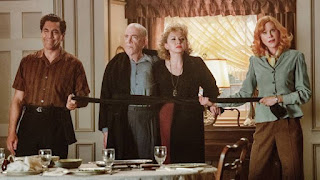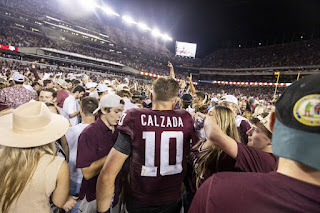As they spoke, her expression froze, as time stopped for her that day. She learned that her fiancé, a navigator serving in the U.S. Army Air Corps, had gone missing in action while on a squadron mission during World War II. The rest of the words they spoke drifted into the vapor as she processed the news.
Her mind rushed back to images of their happiest times together. They’d met in college. He was a Pre-Med student from the north, and she was a young woman from the Midwest, studying journalism and big bands.
She often missed or was late to French class, which began at 8:00 a.m. She never missed a dance. Her dance card was always filled on each occasion. And no fewer than six young men had asked her to wear their fraternity pins, which she had done from time to time, “because they began crying when she said ‘no’ to their first request.
Known for her love of life, sense of humor, and truthful heart and spirit, surely she was destined for a life of “happily ever after.” So thought every woman who was in college to get an education and possibly find their soulmate at some point. The nuclear family of husband, wife, and 2.3 children, a dog, a cat, and a picket fence surrounding their home wasn't that far away was it?
Those were the days. Music on the radio, supper clubs with live music, fine food, and dancing the night away were for dating. Drive-in movies could find three couples fit into wide roadsters that had convertible tops for fresh-air theatre, before it became billed as “movies under the stars.” Six people could attend the movie for the price of a “carload” back when no one had much money for dates. A bowlful of prepopped popcorn could be stored to save a trip to the concession stands. You propped the tinny speaker on the driver’s side window to hear the soundtrack that Hollywood had prepared for you.
Before he had left college to serve his country, he’d asked her to marry him, on more than one occasion. She declined, saying that she wanted to wait until he came home safely before they began life together. His number had been called and he didn’t want to take the deferment because he was a medical student. He was ready to serve his country. “It was the right thing to do,” he said. She agreed. She was firm in her decision, having reflected for days at a time whether or not to at least start life out by taking a chance that everything would be all right and they would live happily ever after.
And yet, there was only one decision for her—wait until he came home. He asked if she would at least wear a ring while she waited. Although she declined, she said, “I am your fiancée and that is all you need to know. Come back to me after the war, and I will be your wife.” Days, weeks, and months went by. At the movies there were the news reels and films showing our country at war. It was a time of war bonds, of doing without some luxuries, and of rationing things they used to take for granted.
Women were working in jobs that were traditionally held by men. She was a secretary at the U.S. Treasury at that point in her career, having left college because funds were tight, and all income was needed to keep the large family going. The nation’s attitude was united in fighting a common enemy abroad. There was no question about all who would serve.
Until that fateful day arrived. The doorbell rang. The news was delivered. Life as she knew it, or expected it to be, was over. She faced a myriad of decisions about the future. Mostly for a while it was a blur. Her own brothers had lied to enter the service far before their 18th birthdays and our armed forces needed those who would be willing to serve so they paid little attention to ID before swearing in those ready to defend the United States.
The weapons they were issued back then were not sophisticated, but they got the job done. Looking at the faces of the young men in combat back then, they didn’t approach their jobs with an expectation of dying. They painted the outsides of their planes to fit their personalities and sassy slogans adorned the fuselage.
They knew every inch of their aircraft and the people who were on base in charge of maintenance. Soldiers trained and prepared for their individual roles, but they knew where each was vital within their squadron. On each plane you would have a pilot, a copilot, a navigator, a bomber, one or two gunners, an engineer, and a radio operator.
You flew numerous training missions to get ready for the day and time when you would be airborne, on a mission to defend and protect your country. Adrenaline rushed and blood pressure spiked. There is no real-life equivalent to the actual circumstances, not even in Hollywood’s current depiction of “Top Gun: Maverick.”
Yet, on this Memorial Day, multiple generations of the families of those who were killed in war have this one day for our nation to remember the loss of their lives to protect our country.
As it turns out, the young woman who was never to marry the love of her life would know that some of the squadron made it back when her man did not. For over 30 years, she was not in contact with any of them. In that time she’d worked for several years, married, and years later had a child, and ultimately divorced.
The child would grow up hearing about her mother’s early life and challenges she faced. When asked how she managed to cope with the loss, she responded, “Faith in God,” and that didn’t come instantly. A child who’d been to church all her life, her faith went down in the shrapnel of that burning airplane and stayed as missing in action for a year as her fiancé was.
But into her life came the birth of her a child of her brother and his wife, and he was also in service at the time. The presence of the little one as they, too, lived in the family home, made her realize how precious life was. When the child cried at night, the woman who went to check on her was her aunt, so the mother could sleep a little more. In those quiet nights together, the woman rocking the little girl fell back into faith, because she relearned how to love again. Days became brighter as time went on.
Fifty years after the war, in 1996, the woman recalled that one of the men in the squadron that her fiance had belonged to was from Texas A&M. A call to the Association of Former Students later, she dialed the number of the former student who was still living in Texas. In a conversation that lasted about 45 minutes, the woman learned details about the mission, and her fiance, that no one else could have known to tell her.
In that conversation, she found closure to her grief that had haunted her about the unknown. She knew exactly what had preceded his going missing in action and why it was understandble that her fiance and another soldier had gone and remained missing in action. It took over 50 years for closure, which was fortunate in that many women who lost loved ones in World War II never got that kind of understanding. A miracle and an Aggie angel brought that gift.
This week we face a tragedy of massive proportions equivalent to the one last week from the mass loss of lives thanks to the suspension of laws that previously forbade assault weapons being readily available. The right to bear arms is found in the Second Amendment to the U.S. constitution.
Those who read People magazine might recall in 2013, the Manchin-Toomey amendment that would have required “background checks on all commercial gun sales.” This was proposed “four months after 26 people were killed at Sandy Hook elementary” and it fell six votes short of getting 60 votes needed to overcome a filibuster. Here’s why: “Nearly all of the 46 senators who voted against that amendment had accepted significant campaign contributions from PACs associated with gun rights groups, including the NRA.”
Let’s be clear. All of you professional hunters, sportsmen, gamesmen (and women), and even those of you who love your NRA—I’m not at all asking you to put down your guns. I’m not “coming after your weapons” and those of you who know me better know that or you’re not paying attention.
It’s your right to own guns. It is not your right to arm children with assault rifles and not even wonder how an 18-year-old can afford to buy not 1, but 2 of them within 48 hours and a bunch of ammo to go with it. How many 18-year-olds that you know actually need an assault rifle? The kind they build to protect service personnel and kill enemies of war? That kind?
We cannot go back in time and recover the lives that were lost in World War II any more than we can bring back the lives of the children whose lives were lost last week. But going forward we can do far more than we have to keep our children and our teachers, staff, and administrators safe at school.
Here at home in the Brazos Valley, we do a better job of honoring lives that were lost. Wreath-placing on graves, ceremonies at the Brazos Valley Veterans Memorial in College Station, and in the remembering of generations past. The lives were lost in war or wartime, maybe even in training preparing troops for war.
Others lost their lives after suffering PTSD among service personnel who signed up to protect, defend, and serve the U.S. government and its citizens, lost to a bullet, a grenade, a gas, or other weapon. They fell apart after serving their country in times of war, protecting our country against those who would destroy our freedom.
When all is said and done, future generations will judge us by what we did and how we did in trying to protect “those at home” from those who are enemies to the lives we hold dear.
We cannot go back in time and recover the lives that were lost in World War II any more than we can bring back the lives of the children and teachers whose lives were lost last week. But going forward we can do far more than we have to keep our children and our teachers, staff, and administrators safe at school.
When election time is around, remember whose elections are financed by who and what. Know what they stand for. If you continue to vote for them, then what they stand for is what you stand for. Lest you ask, “What can one person do?” the answer is simple.
The same one person who signed up to defend our country in peacetime or in war can be matched by another who signs up to teach our children, coach our children in positive activities outside the classroom, and you can also exercise your right to vote for people who own their own souls. One voice, one life, one soul can change the world as we know it. One person at a time, we can change the future, if we really want to. You know how it’s done.
In loving memory of all those brave men and women who gave their lives for our county, to whom we owe a debt we can never repay.





















